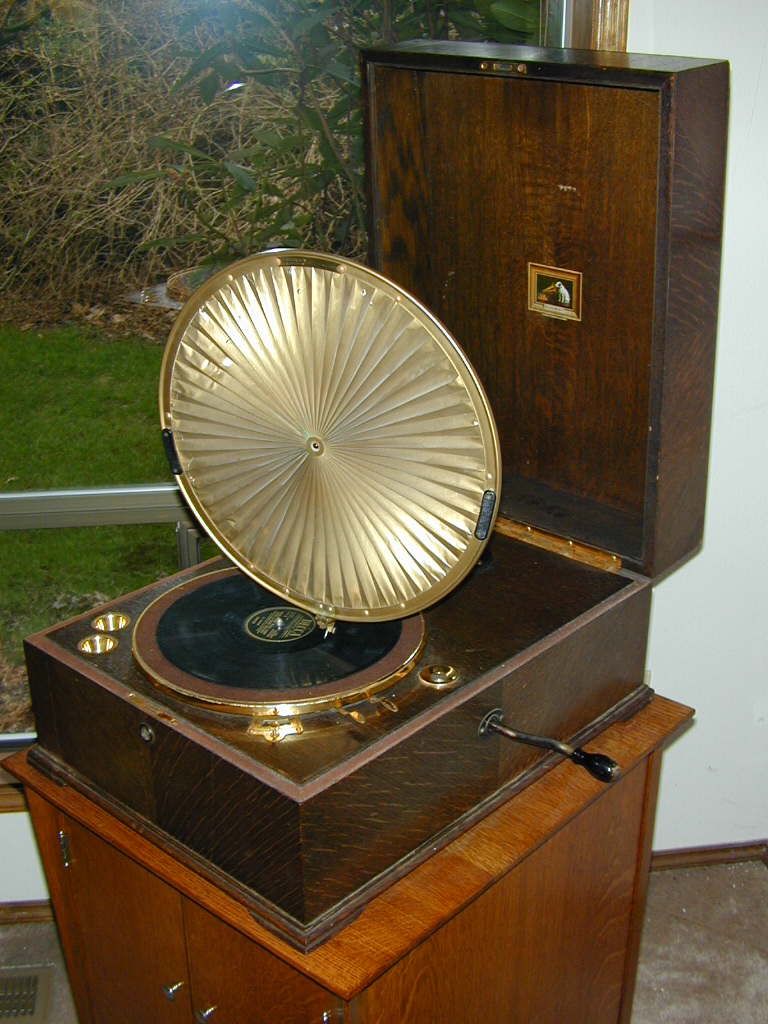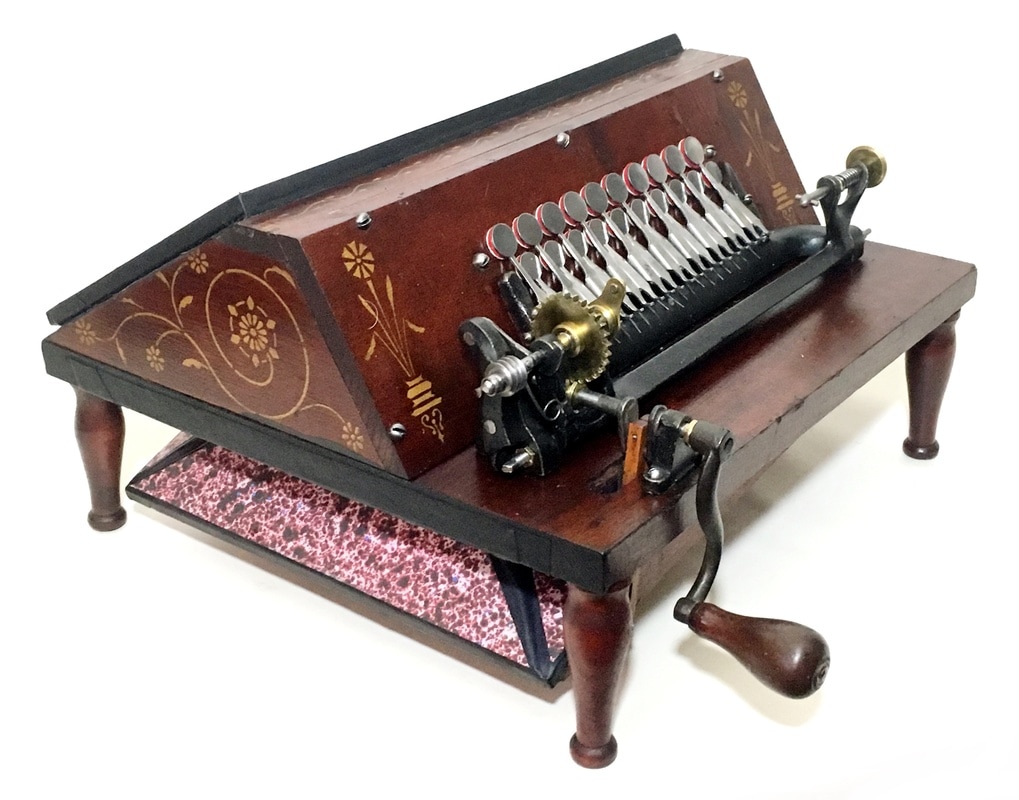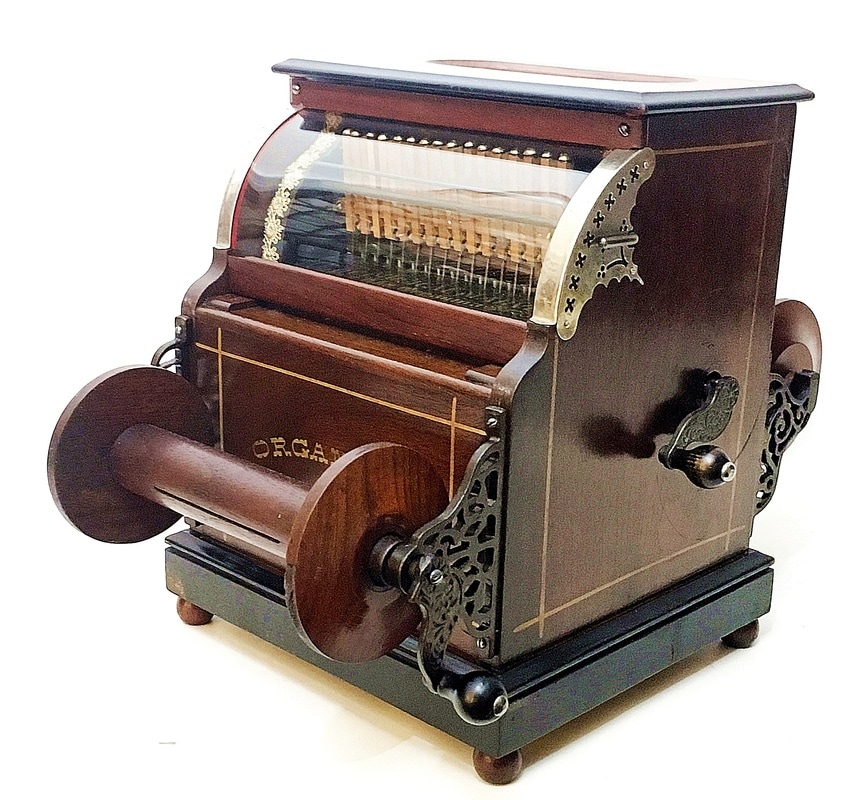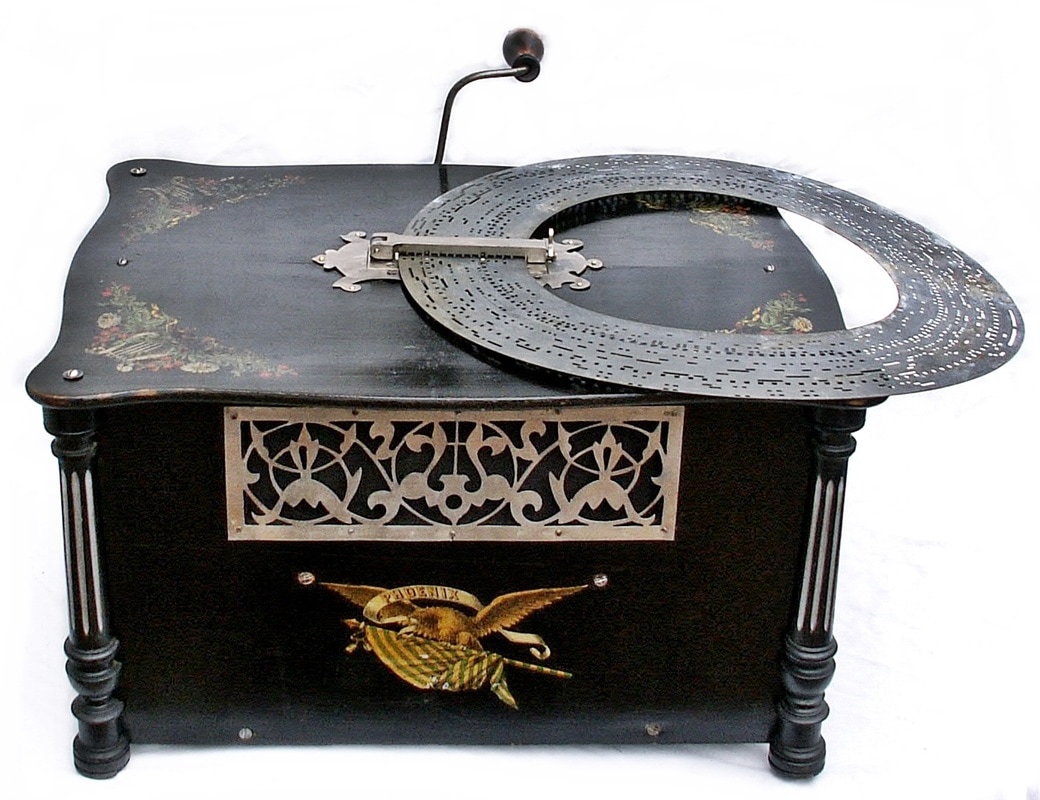This is a model 460 HMV Lumiere in an oak case. HMV (His Master’s Voice) was a brand of the Gramophone Company Ltd. of London. The Lumiere gramophone replaced the usual reproducer, tone arm and horn with a pleated paper diaphragm. The center of the diaphragm is directly connected to the needle via a thin metal lever. The Lumiere was not a commercial success and was only manufactured for two years (1924-1925).
Pedestal Style Gem
Gem roller organs were made by the Autophone Co. of Ithaca, NY from the mid-1800s to the 1900s. This is a very early model; later ones have an enclosed bellows. It is also known as a cob organ because the music is provided on a cob-sized wooden cylinder with inserted steel pins. As the cylinder rotates, the pins press the valve covers to open them.
One of the least expensive organettes, it was advertised in the Sears catalog for $3.25. It has 20 notes.
(photo provided by Harold Draper of Roller Organ Restorations)
Manopan
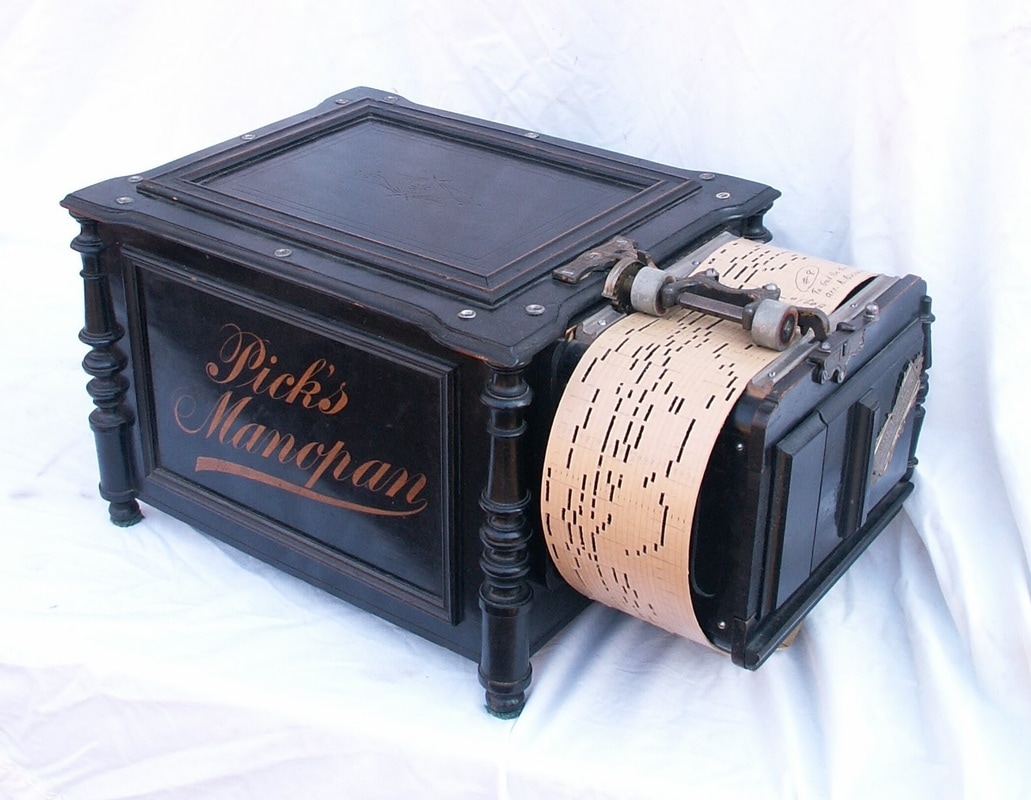
The Manopan was made by Berliner Musikinstrumenten (Charles F Pietschmann & Sohne) in Berlin, Germany circa 1887. This model has 24 notes. It plays both continuous loop and cardboard book music. (photo provided by Harold Draper of Roller Organ Restorations) |
Organina
The Organina was one of dozens of organette brands made by the Massachusetts Organ Company. This is the Mignonette model, which has 16 notes.
Ads for the Organina stressed the fact that the paper roll was not the valve for the reeds. Instead, the paper holes triggered mechanical tracker arms that operated the valves. It’s also one of the few organettes that offered external roll spools.
(photo provided by Harold Draper of Roller Organ Restorations)
Phoenix
Phoenix organettes were made by Schmidt & Co., Phonix Musikwerke of Leipzig, Germany from 1870 – 1905. This 34B model has 24 notes. The media is a zinc ring-shaped disc. There were different diameter discs made to accommodate different length tunes.
(photo provided by Harold Draper of Roller Organ Restorations)

